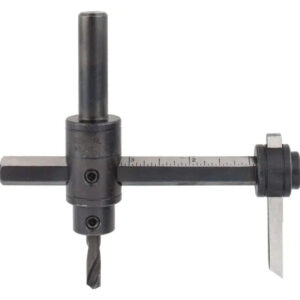Introduction
In the fast-paced construction industry, managing equipment effectively is crucial for ensuring productivity and minimizing costs. Construction equipment management software has emerged as an essential tool for contractors and project managers, providing a streamlined approach to tracking, maintaining, and optimizing the use of machinery and tools. This article delves into the features, benefits, and best practices of using construction equipment management software, highlighting how it can transform operations on job sites.
What is Construction Equipment Management Software?
Construction equipment management software is a specialized application designed to help construction companies monitor and manage their machinery and tools. This software typically includes features for tracking equipment usage, scheduling maintenance, managing inventory, and analyzing performance metrics. By providing real-time data and insights, it empowers managers to make informed decisions that enhance operational efficiency and reduce downtime.
Key Features of Construction Equipment Management Software
1. Asset Tracking
One of the primary functions of construction management software is asset tracking. This feature allows companies to monitor the location and status of their equipment at any given time. Using GPS and RFID technology, managers can easily locate assets, preventing loss or theft and ensuring that machinery is readily available when needed.
2. Maintenance Management
Regular maintenance is crucial for extending the lifespan of construction equipment. Equipment management software enables users to schedule maintenance tasks, track service history, and set reminders for upcoming services. This proactive approach minimizes the risk of breakdowns and costly repairs, ensuring that equipment operates smoothly throughout the project lifecycle.
3. Utilization Reports
Understanding how often and effectively equipment is used is vital for optimizing resources. Construction equipment management software provides detailed utilization reports, allowing managers to analyze equipment performance and identify underutilized assets. This data helps in making informed decisions about reallocating resources or investing in new machinery.
4. Inventory Management
Managing inventory is essential for ensuring that all necessary tools and parts are available on-site. Equipment management software often includes inventory tracking features, enabling users to monitor stock levels, reorder supplies, and manage tool assignments. This functionality reduces delays caused by missing equipment and helps maintain a well-organized job site.
5. Cost Tracking and Budgeting
Effective financial management is crucial in the construction industry. Many equipment management software solutions offer cost tracking features that allow companies to monitor expenses associated with equipment operation, maintenance, and repairs. By analyzing these costs, managers can better budget for future projects and identify areas where savings can be achieved.
6. Reporting and Analytics
Data-driven decision-making is essential for improving operational efficiency. Construction equipment management software provides robust reporting and analytics tools, allowing users to generate reports on equipment performance, maintenance history, and utilization rates. These insights enable managers to make strategic decisions that enhance productivity and reduce costs.
Benefits of Using Construction Equipment Management Software
1. Increased Efficiency
By automating tracking, maintenance scheduling, and reporting tasks, construction management software significantly increases operational efficiency. Teams can focus on their core responsibilities instead of spending time manually managing equipment, leading to improved productivity on the job site.
2. Reduced Downtime
Downtime can be costly in construction projects. With proactive maintenance management and real-time tracking, equipment management software helps identify potential issues before they escalate. This proactive approach minimizes unexpected breakdowns and ensures that machinery is available when needed, keeping projects on schedule.
3. Enhanced Resource Allocation
Understanding equipment utilization enables better resource allocation. By analyzing usage patterns, managers can make informed decisions about which equipment to deploy on specific projects, ensuring that resources are used efficiently and effectively.
4. Improved Cost Management
With detailed cost tracking and budgeting features, construction equipment management software helps companies keep their expenses in check. By identifying cost-saving opportunities and monitoring expenditures, managers can make more informed financial decisions, ultimately improving profitability.
5. Increased Safety
Managing equipment effectively contributes to a safer work environment. By ensuring that machinery is regularly maintained and inspected, companies can reduce the risk of accidents and injuries on job sites. Additionally, having a clear overview of equipment locations helps prevent unauthorized use or placement in hazardous areas.
Best Practices for Implementing Construction Equipment Management Software
1. Choose the Right Software
Selecting the right construction equipment management software is crucial for maximizing benefits. Consider factors such as ease of use, scalability, and compatibility with existing systems. Conduct thorough research and request demos to evaluate different options before making a decision.
2. Train Your Team
Proper training is essential for ensuring that your team can effectively use the software. Provide comprehensive training sessions and resources to familiarize employees with the features and functionalities of the equipment management software. Ongoing support can also help address any issues that arise.
3. Integrate with Other Systems
Integrating equipment management software with other management systems, such as project management or accounting software, can enhance overall efficiency. This integration allows for seamless data sharing and improves visibility across different aspects of the business.
4. Regularly Update Data
To maximize the effectiveness of construction equipment management software, it’s essential to keep data updated. Regularly input information regarding equipment usage, maintenance, and inventory to ensure that reports and analytics reflect the most accurate information for decision-making.
5. Monitor Performance Metrics
Continuously monitor performance metrics to assess the effectiveness of your equipment management strategies. Use the insights gained from reporting and analytics to make data-driven adjustments that improve operations and drive efficiency.
Conclusion
Construction equipment management software plays a vital role in enhancing the efficiency and effectiveness of construction operations. By providing tools for asset tracking, maintenance management, and cost analysis, this software empowers businesses to optimize resource utilization and minimize downtime. As the construction industry continues to evolve, investing in robust equipment management solutions will be essential for staying competitive and achieving project success. By understanding the key features and benefits of this software, companies can make informed decisions that lead to improved operational performance and profitability in their construction projects.





[…] Construction equipment management software is vital for enhancing efficiency and effectiveness in construction operations. By providing tools for asset tracking, maintenance management, and cost analysis, this software empowers businesses to optimize resource utilization and minimize downtime. As the construction industry continues to evolve, investing in robust equipment management solutions will be essential for remaining competitive and achieving project success. By understanding the key features and benefits of this software, companies can make informed decisions that lead to improved operational performance and profitability in their construction projects. […]